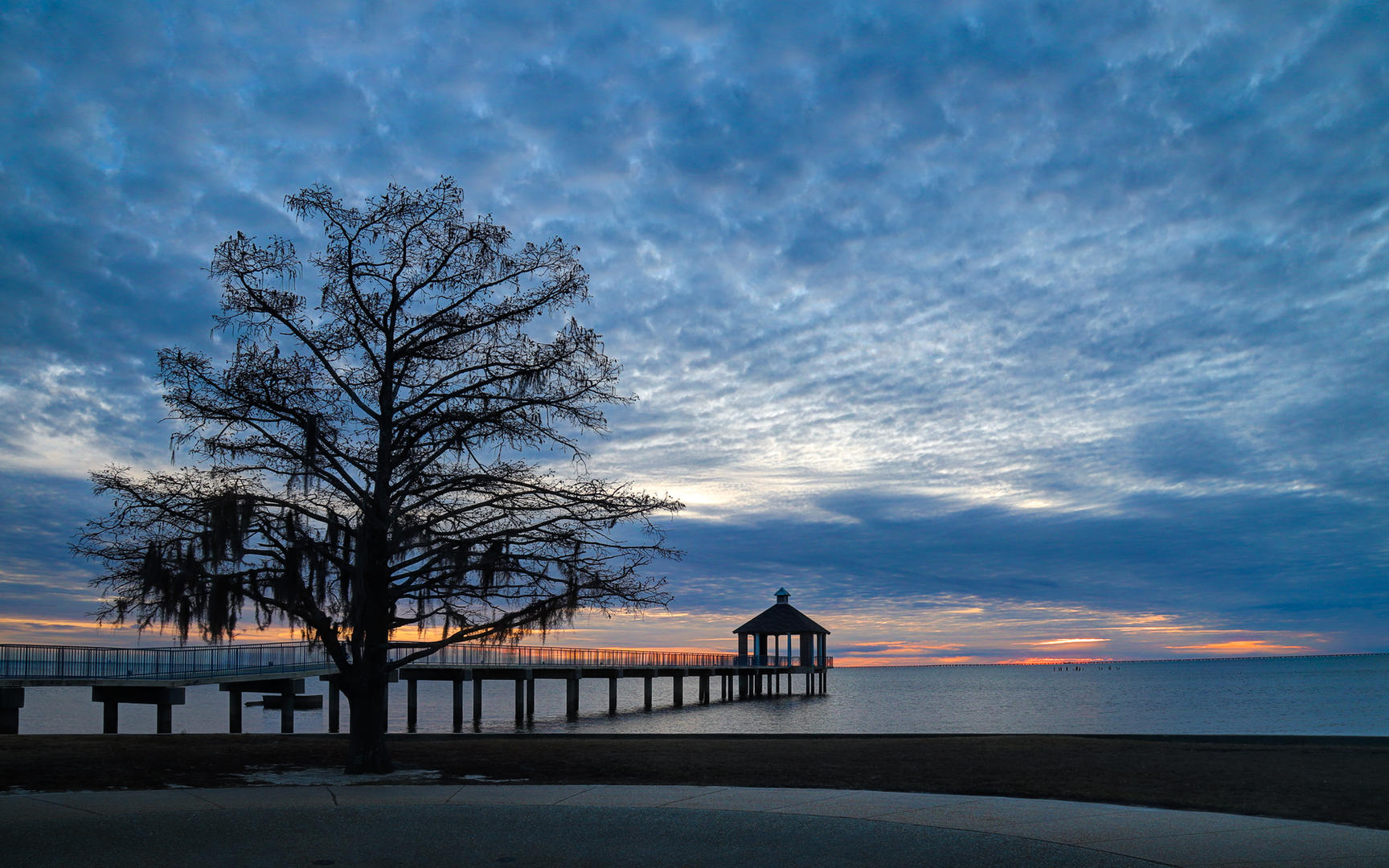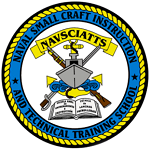Welcome Aboard
Congratulations on your orders to Naval Small Craft Instruction and Technical Training School (NAVSCIATTS) - a Department of Navy Security Cooperation enabling schoolhouse operating under U.S. Special Operations Command and universally recognized as the finest small craft training command worldwide.
You are joining a command with both a rich history and an important global mission. Our team of military, government service, and contractor civilian professionals provides state-of-the-art, full spectrum training to Foreign Special Operations Forces, SOF-like forces, and SOF enablers from more than 120 Partner Nations around the world.
We are privileged to be tasked with such an important role. Security Force Assistance and the ability to increase the security capacity of countries friendly to the United States are key components of the U.S. National Security Strategy. It is tied to long-term goals and objectives and encompasses direct support to diplomatic, economic, political, as well as military plans, policies, and directives.
To learn more about your new command, please feel free to contact the Command Quarterdeck to make contact with a Sponsor Program Coordinator so that we can assist with your transition.
Upon arrival, report in uniform to the Quarterdeck in Building 2606, John C. Stennis Space Center, Mississippi, to have your orders endorsed. You may then begin your administrative check-in process. The NAVSCIATTS Quarterdeck can be reached at 228-813-4050.
You will find this assignment both personally and professionally fulfilling. Each member of the command is an essential partner on our team, and we look forward to the talent and experience you will add. Welcome Aboard!
Additional Check-in Information:
While transitioning to NAVSCIATTS as instructors and staff, please remember that NAVSCIATTS is located on a NASA facility, as opposed to a DoD facility. You are allowed entrance to the Stennis Space Center with your CAC; however, your dependent will not be allowed access with a DoD dependent ID card. Should you need to access Stennis facilities prior to formal check-in with dependents, you must first contact NAVSCIATTS at 228.813.4050 a minimum of 24 hours out to request sponsorship for your dependent. At that time, please be prepared to provide name of dependent in order for access to be requested via the NASA system. Visitor badge can be picked up at the Stennis Visitor's Center located at the South gate. Once formally checked in, all staff members will be required to register their CAC into the NASA systems. Complete information will be provided to the Service Member by ADMIN at check-in.
Stennis Space Center Area Information
Finding your way around a new place can be confusing. Luckily, you are moving to an area with miles of white sandy beaches, famously pleasant weather, and friendly people. A large percentage of our personnel live in one of the following communities in either Mississippi or Louisiana. Below are a few links and information about some of these communities to help you with your move. |
|
Mississippi is bordered on the north by the state of Tennessee, on the east by Alabama, on the south by Louisiana and the Gulf of Mexico, and on the west by Louisiana and Arkansas. The state is named for the Mississippi River which forms its western boundary and empties into the Gulf of Mexico. The name roughly translated from Native American folklore means "Father of the Waters." Mississippi was organized as a territory in 1798 and was admitted as the 20th state to join the Union in 1817. Jackson is the capital city and the largest metropolitan area. Top economic industries in Mississippi today are agriculture and forestry. Mississippi produces more than half of the country's farm-raised catfish, and is also a top producer of sweet potatoes, cotton, and pulpwood. Other main industries in Mississippi include advanced manufacturing, utilities, transportation, and health services. Mississippi is almost entirely within the Gulf coastal plain, and generally consists of lowland plains and low hills. The northwest remainder of the state consists of the Mississippi Delta, a section of the Mississippi Alluvial Plain. |
Picayune Located about 18 miles north of Stennis Space Center, things are a bit more relaxed in Picayune. While the hustle and bustle of metro New Orleans and the big gaming action of the Mississippi Gulf Coast are only 40 miles away, this town of about 12,500 residents still retains a hometown atmosphere and an easy-going lifestyle. Learn more at
http://picayune.ms.us/ |
|
Pass Christian Located about 29 miles southeast, "The Pass" is a vibrant and diverse community of residences, two harbors, two parks, a seafood industry, and several small businesses. It is annually ranked at the top of both state and national schools, earning both “A” and Blue Ribbon designations and was named to Coastal Living Magazines' list as Best Place to Live on The Coast. Learn more at https://pass-christian.com/history/. |
Bay St. Louis Located about 27 miles southeast, Bay St. Louis is growing faster than any other city in South Mississippi. The city was named one of "The Best Little Beach Towns" by Coastal Living Magazine and also one of the "Coolest Small Towns.” Learn more at
http://www.baystlouis-ms.gov/ |
Diamondhead Located about 23 miles east, Diamondhead, unlike most of the Mississippi Gulf Coast which is relatively level, is built around a golf course on rolling topography. Since most of Diamondhead was a planned community, it has many facilities designed to attract home buyers. Learn more at http://www.diamondhead.ms.gov/ |
Louisiana is a state located in the southern region of the United States. Louisiana is the 31st most extensive and the 25th most populous of the 50 United States. Its capital is Baton Rouge and largest city is New Orleans. Louisiana is the only state in the United States with political subdivisions termed parishes, which are local governments equivalent to counties. The largest parish by population is East Baton Rouge Parish, and the largest by land area is Cameron Parish. Much of the state's lands were formed from sediment washed down the Mississippi River, leaving enormous deltas and vast areas of coastal marsh and swamp. These contain a rich southern biota; typical examples include birds such as ibis and egrets. There are also many species of tree frogs, and fish such as sturgeon and paddlefish. In more elevated areas, fire is a natural process in the landscape, and has produced extensive areas of longleaf pine forest and wet savannas. These support an exceptionally large number of plant species, including many species of terrestrial orchids and carnivorous plants. Louisiana has more Native American tribes than any other Southern state, including four that are federally recognized, 10 that are state recognized, and four that have not received recognition. |
Slidell Located about 21 miles southwest of the Stennis Space Center, Slidell is located at the southeastern tip of St. Tammany Parish in Louisiana's famous Ozone Belt. It is about three miles from the north shore of Lake Pontchartrain and is surrounded by rivers and bayous. Learn more at
http://www.slidell.la.us/ |
Mandeville Located about 38 miles west, Mandeville was recently named as one of America’s Best Places to Raise Kids. Known as the oldest inhabited locality in St. Tammany Parish, the city offers an amphitheater, a local farmer's market, a wide variety of shopping areas, and award winning restaurants.
Learn more at
http://www.cityofmandeville.com/ |
Covington Located about 45 miles west of the Stennis Space Center, Covington is known as a charming Southern community nestled among three rivers. An eclectic mix of boutiques, art galleries, specialty shops and restaurants line the downtown streets. Special care has been taken to ensure the conservation of Covington's historic homes and buildings. Learn more at
http://covla.com/ |


